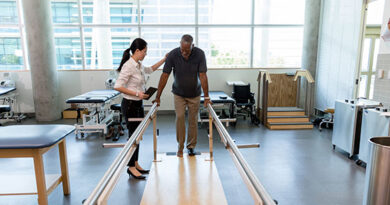Drug-Free Knee Pain Relief: Exploring Alternative Treatments
Knee pain is a common ailment that affects people of all ages and can result from various factors, such as injuries, arthritis, or age-related wear and tear.
While conventional treatments like medication, physiotherapy, and surgery can be helpful, many people seek drug-free alternatives for knee pain relief.
In this article, we will explore some of these treatments, including Magnetic Resonance Therapy (MRT) or Molecular Biophysical Stimulation Therapy (MBST), acupuncture, prolotherapy, and many more you may be utilising at present.
Acupuncture
Originating from traditional Chinese medicine, acupuncture is a technique that involves inserting fine needles into specific points on the body to stimulate the flow of energy (Qi) and promote natural healing.
Research has shown that acupuncture can help reduce knee pain, particularly for individuals with osteoarthritis.
By targeting specific acupuncture points associated with the knee, practitioners aim to alleviate pain, reduce inflammation, and improve overall joint function.
Prolotherapy
Prolotherapy, also known as regenerative injection therapy, involves injecting a natural irritant solution into the affected joint.
This treatment triggers a healing response and stimulates the growth of new ligament and tendon tissue, reducing pain and improving stability in the knee.
Studies have shown that prolotherapy can be effective in alleviating knee pain, especially when combined with other treatments such as physical therapy or exercise.
Platelet-rich Plasma (PRP) Therapy
PRP therapy involves taking a sample of the patient’s blood, separating the platelets and plasma, and injecting this concentrated solution into the affected knee.
The growth factors and proteins in the PRP solution are thought to help promote tissue repair and reduce inflammation.
Research has shown that PRP therapy can be effective in reducing knee pain and improving joint function, particularly for individuals with osteoarthritis or sports-related injuries.
Hyaluronic Acid injections
Hyaluronic acid injections, also known as viscosupplementation, involve injecting a gel-like substance into the knee joint to help lubricate the joint and reduce pain.
This treatment is often recommended for individuals with osteoarthritis who have not responded well to other treatments.
Studies have shown that hyaluronic acid injections can help alleviate knee pain and improve joint function, with some patients experiencing relief for up to six months.
Glucosamine and Chondroitin Supplements
Glucosamine and chondroitin are dietary supplements often used to help improve joint health and reduce knee pain associated with osteoarthritis.
These supplements are thought to help promote cartilage repair and reduce inflammation in the joint.
Research has shown that taking glucosamine and chondroitin supplements can help alleviate knee pain, particularly when combined with other treatments such as exercise and weight loss.
Magnetic Resonance Therapy (MRT) or Molecular Biophysical Stimulation Therapy (MBST)
MBST therapy is an innovative treatment option, and a relative unknown to many, that uses the same physical principles as Magnetic Resonance Imaging (MRI) but with a much weaker electromagnetic field.
The treatment aims to stimulate different processes in organic tissue at the molecular level, helping to promote healing and regeneration.
Research has shown that MBST can be beneficial in the treatment of knee pain, improving pain, joint function, and quality of life. This drug-free treatment offers a promising alternative for individuals seeking relief from knee pain without the use of medication.
Chiropractic care
Chiropractors are trained to assess and treat musculoskeletal issues, including knee pain.
They may use a variety of techniques, such as spinal manipulation, joint mobilisation, and soft tissue therapies, to help improve joint alignment and reduce pain.
Chiropractic care can be particularly helpful for individuals with knee pain resulting from misalignment or imbalance in the lower limbs or pelvis.
Massage Therapy
Massage therapy can be beneficial for those suffering from knee pain by helping to reduce muscle tension, improve circulation, and promote relaxation.
Techniques such as deep tissue massage, myofascial release, and trigger point therapy can help address the underlying causes of knee pain, such as tight muscles, restricted fascia, or muscle imbalances.
Regular massage therapy sessions can also help improve joint mobility and overall knee function.
Living with knee pain can be challenging, but there are many drug-free alternatives available to help alleviate discomfort and improve joint function.
If you’re considering trying one of these treatments, it’s essential to consult with a healthcare professional to discuss your specific needs and determine the best course of action.
Whether you opt for acupuncture, prolotherapy, PRP therapy, hyaluronic acid injections, glucosamine and chondroitin supplements, MBST, chiropractic care, or massage therapy, these alternative treatments offer promising solutions to help you find relief from knee pain and enhance your overall quality of life.
So, go forth and take control of your pain management, it may well be the best decision you’ve ever made.




